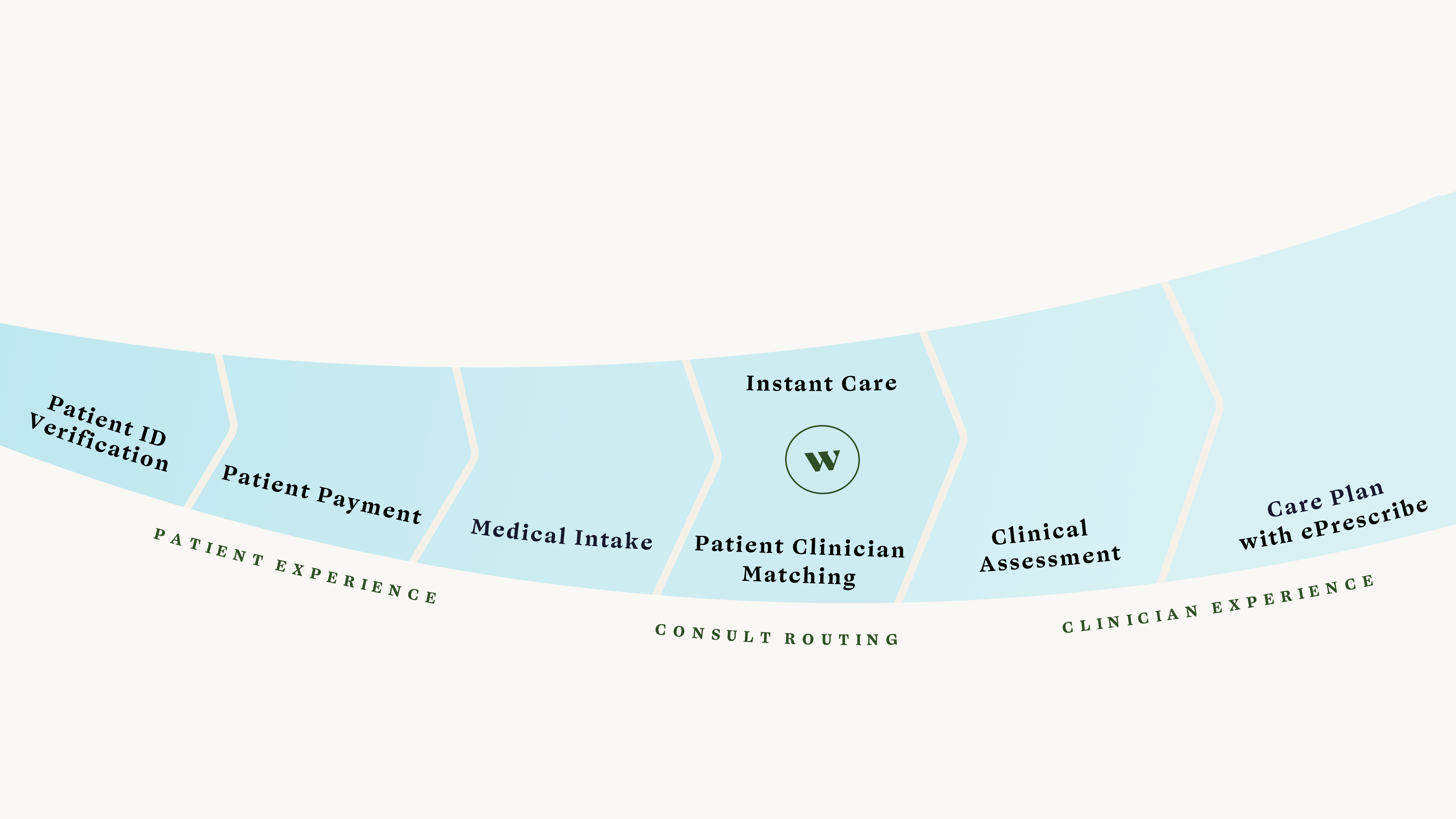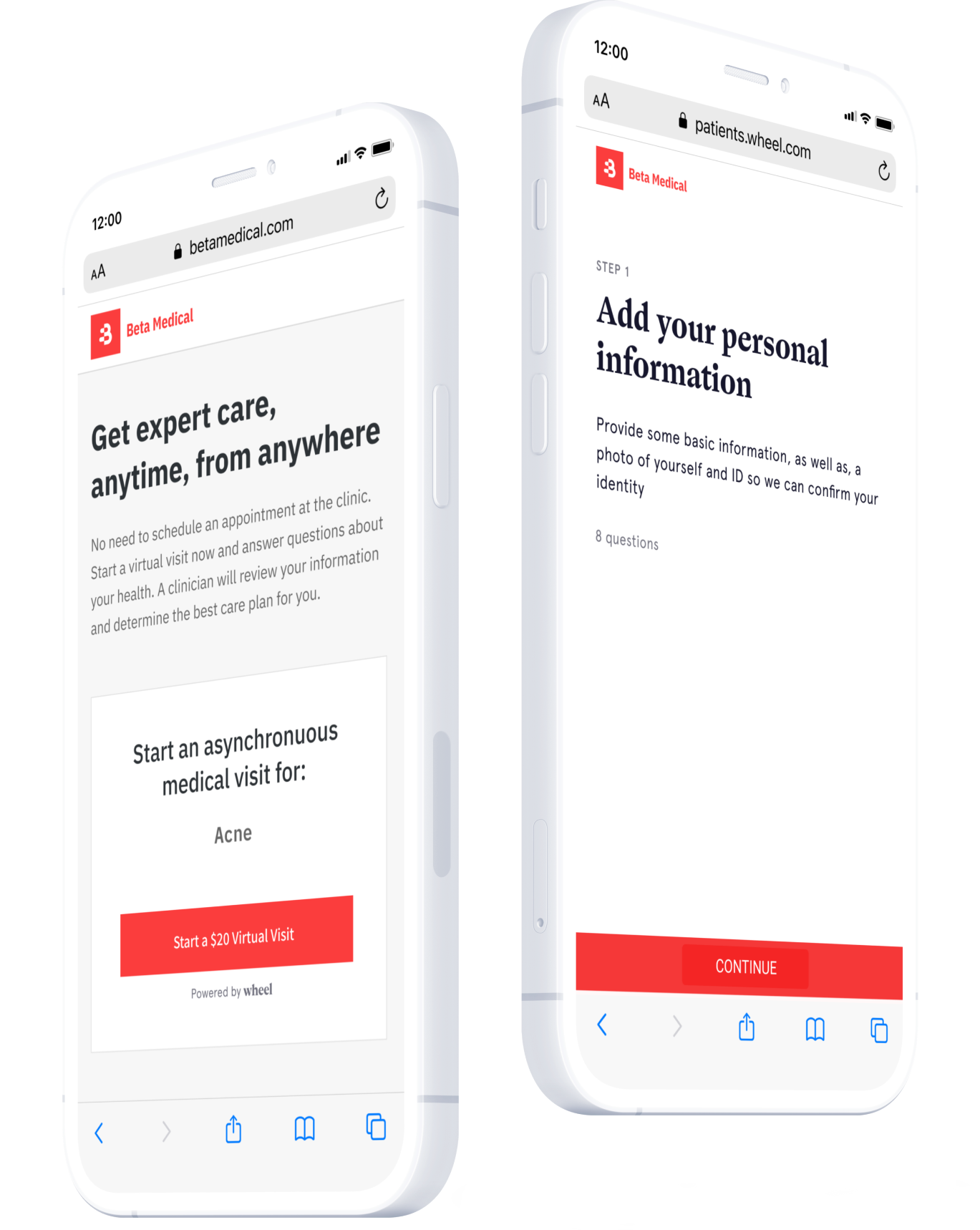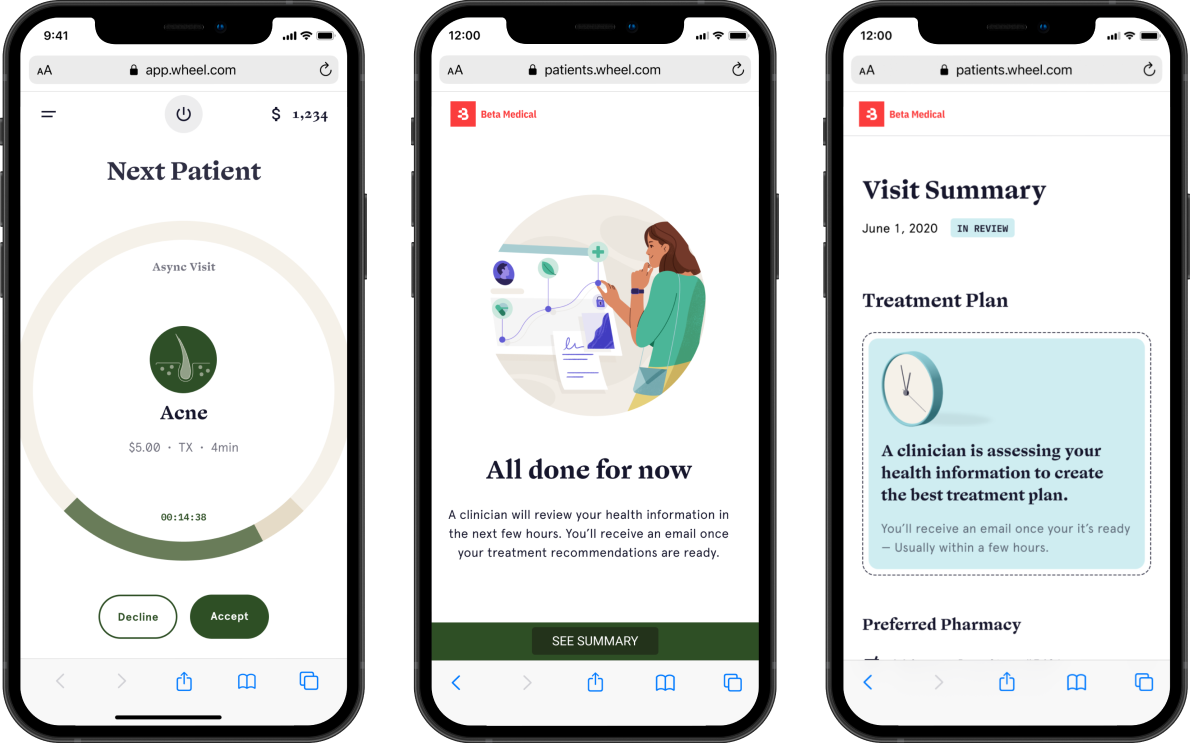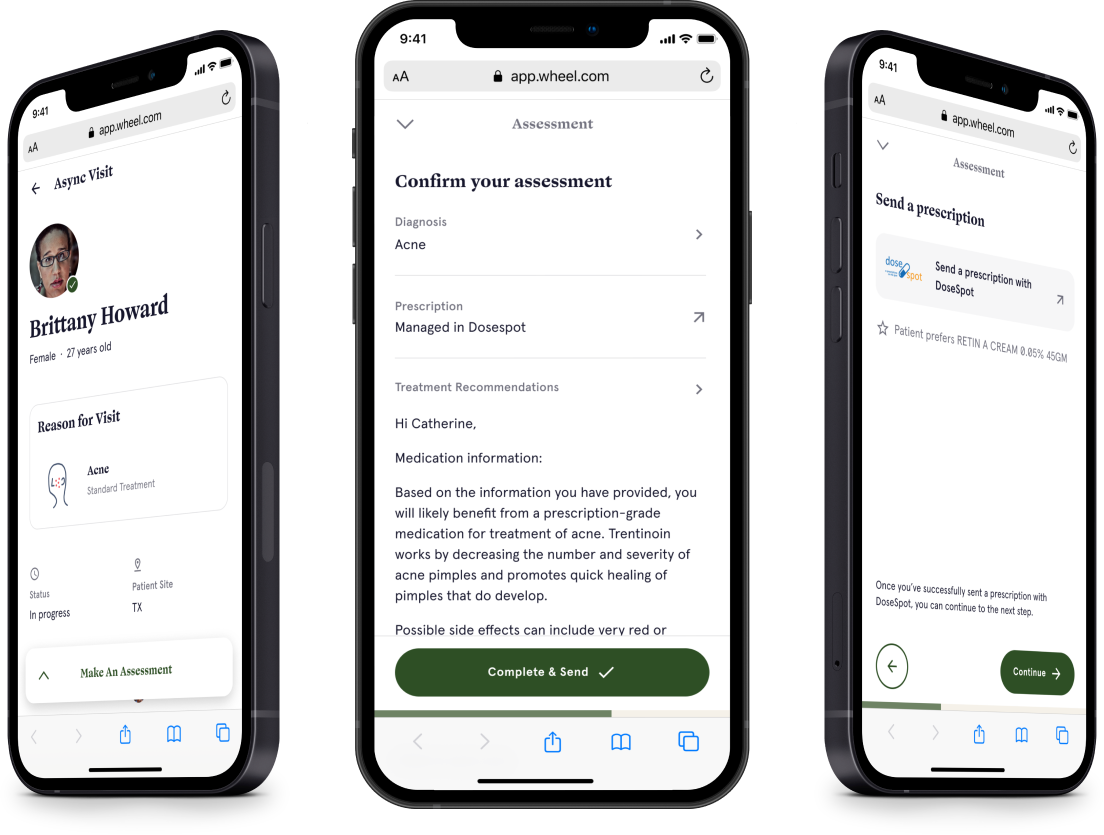Components of a Telehealth Workflow

Before you explore telehealth technology platforms, it’s important to understand the technical process of how care is delivered virtually. Get to know the virtual care workflow and the critical technology considerations for each step.
Each step within the virtual care workflow is an opportunity to elevate your brand and provide an exceptional experience for clinicians and patients. To deliver on that promise, your organization should be clear on what you need out of your telehealth platform technology at each touchpoint. This ensures you have context for evaluating the virtual care platform features and benefits that your organization considers essential, nice-to-have, or extraneous.
Telehealth delivery process within virtual care platforms

Telehealth service delivery consists of six core steps within three phases: the patient experience (patient portal), consult routing or the process of matching a clinician to a patient, and the clinical experience (clinician portal). Each step has its own technology considerations that help determine the strengths and weaknesses of platforms you will consider, and which components you prefer to keep or build in-house.
Next, we’ll unpack each step and the associated technology considerations to keep in mind.
The virtual care patient portal

The patient initiates the first touchpoint with your virtual care platform. The most important considerations here are whether you want to keep ownership over the patient experience within the portal through branding, and how to ensure compliant patient privacy and security when receiving and processing personal identification information and payments.
Step 1: Patient ID Verification
Using an app or web-interface, the patient will need to prove their identity through ID upload. The clinician verifies patient identity during the medical assessment.
Technology considerations
Patient user experience
Ability to white-label with custom branding (colors, logo, font)
HIPAA compliant privacy
Secure data transmission
Step 2: Patient Payment
In most cases, the patient will need to provide upfront payment for the consult. This can occur through your own payment processing provider or with integrated payment processing within your virtual care platform. It’s important to note that if your service facilitates prescriptions, you’ll need to acquire Healthcare Merchant Certification in order to advertise online or accept payments from major credit card companies including Visa and Mastercard.
Technology considerations
Healthcare merchant certification through LegitScript or NABP
Patient user experience
Privacy and security
Accepted payment types (credit, debit, insurance, copays)
Payment processing service (Stripe, PayPal, Square, etc.)
Platform integration of payment
Bottom line
In some cases, companies choose to handle patient identification and payment processing themselves within their own technology infrastructure or an existing service. Alternatively, virtual care platforms can power the patient experience, payment processing, or both.
Step 3: Medical Intake
For both asynchronous and synchronous video visits, the patient will need to complete an AI-driven questionnaire evaluating their symptoms or condition. This includes personal health information such as medical history, current medications, and reason for the visit and/or symptoms.
Technology considerations
White-labeled with custom branding (colors, logo, font)
Built-in clinical protocols within the platform
Flexibility to adapt to new protocols and algorithms
AI-automated clinical decision support
Patient user experience
Virtual care consult routing

Here is where the virtual care technology truly shines. For multi-state care delivery, the art of managing and matching appropriately licensed and skilled clinicians from across multiple states to patients in multiple states — in real-time — is a particularly astounding feat.
Step 4: Patient-Clinician Matching
This is one of the most challenging aspects of delivering virtual care. Here the technology needs to match the right clinician, with the right license, to the right patient in real-time. The balance lies in delivering compliant care through the appropriately licensed clinician, while delivering rapid and convenient care (think short wait times), at an affordable price.
Technology considerations
Built-in clinical network specific to your geographic footprint and treatment areas
Flexible on-demand API integration
Compliant matching based on state regulations
Competitive patient response times (SLAs) to meet patient expectations
Clinician notifications
Clinical workforce management
Load balancing of clinical network based on demand
Bottom line
At minimum, you’ll need a way to tap into a clinical network (either your own, or via external clinicians) and match patients to the right clinicians in a timely manner. This is where cost comes into play, as over- and under-staffing can become an issue of lost revenue and high opportunity costs. Evaluating the strength of a platform comes down to speed, usability, and the power and reach of the associated clinical network.
The virtual care clinician portal

Clinical decision-making features can be owned or outsourced, and greatly contribute to the usability and speed with which you deploy care. One of the most important considerations here is how to manage prescribing and pharmacy fulfillment.
Step 5: Clinical Assessment
This is where the “consult” happens, whether through live video (synchronous) or via asynchronous clinician review. The clinician records documentation (SOAP notes), evaluates the patient, and determines next steps. Potential actions include ePrescribe, refer out, lab requisitions, or scheduled follow-up.
Technology considerations
Video or asynchronous data platform technology
Built-in ePrescribing
Refer out and lab requisition functionality
Pharmacy fulfillment (patient pharmacy of choice vs. mail order or pre-determined pharmacy partners)
Built-in referral or referral process
Built-in lab requisition requests
Lab partner integrations
Remote patient monitoring capabilities
Device requirements (mobile, desktop/laptop, or mobile + desktop)
Clinician interface and experience
Patient interface and experience
Privacy and security
Bottom line
Prescribing medication through virtual care adds complexity to both in-house and outsourced technology. If you choose to build your own solution you’ll need to secure Surescripts certification — an authentication process by the most prevalent health information network managing nearly 85% of all e-prescription transactions in the U.S. Be forewarned, this process can take from nine months to a year, so most companies choose to use an external solution.
Step 6: Care Plan with e-Prescribe
The final step in a virtual care visit, the care plan comprises both a clinical and patient experience. The clinician documents the visit and triggers the system to take action to resolve the consult — typically through a follow-up email communication recapping the consult and delivering written care instructions for the patient.
Technology considerations
Secure data transfer
HIPAA-compliant email communication through a patient/clinician portal
Patient-clinician communication functionality for follow-up care questions
Secure patient information management
Ability to white-label with custom branding (colors, logo, font)
Bottom line
Ensuring compliance, security, and a high-quality brand experience are critical to this phase of the virtual care visit. Deciding whether to own or leverage a solution with white-labeled functionality is an important consideration for your business’s brand.
Your brand of virtual care delivery with Wheel
Before selecting a virtual care platform or telehealth technology solution, you’ll need to decide what components of the experience you want to own — maintaining the utmost in control — and what parts you may want to outsource. When outsourcing, the option to leverage a white-labeled technology is crucial to extending your brand experience through virtual care.
Wheel simplifies telehealth delivery by seamlessly bringing together everything you need to deliver the white-label, virtual care experience:
A 50-state clinical network
Powered by a dynamic workforce infrastructure
Built on a white-labeled virtual care platform
With integrated clinical and compliance solutions
Learn more about how the Wheel solution can get your brand of virtual care delivered to more patients today.
Explore Wheel’s virtual care platform >